California Oaks and Acorns
I took a walk this morning around the property and noticed the oaks were starting to fill with acorns.
Quercus lobata – the Valley Oak:
Quercus lobata, also known as valley oak or roble oak, is a large deciduous tree native to California. It belongs to the White Oak section of the oak genus. It has distinctive features in its leaves, acorns, and habitat.
Leaves: The leaves of Quercus lobata are dark green on the upper surface and grayish green on the lower surface. They have fine soft hairs on the underside that make them feel velvety. They have 6-10 rounded lobes that vary in size, shape, and depth. The leaves release a forest-like aroma when they are crushed or broken. In autumn, the leaves turn yellow and brown before falling.
Acorns: The acorns of Quercus lobata are conical, brown, and pointed. They are partly enclosed in deep cups that have light brown scales with small bumps or warts.
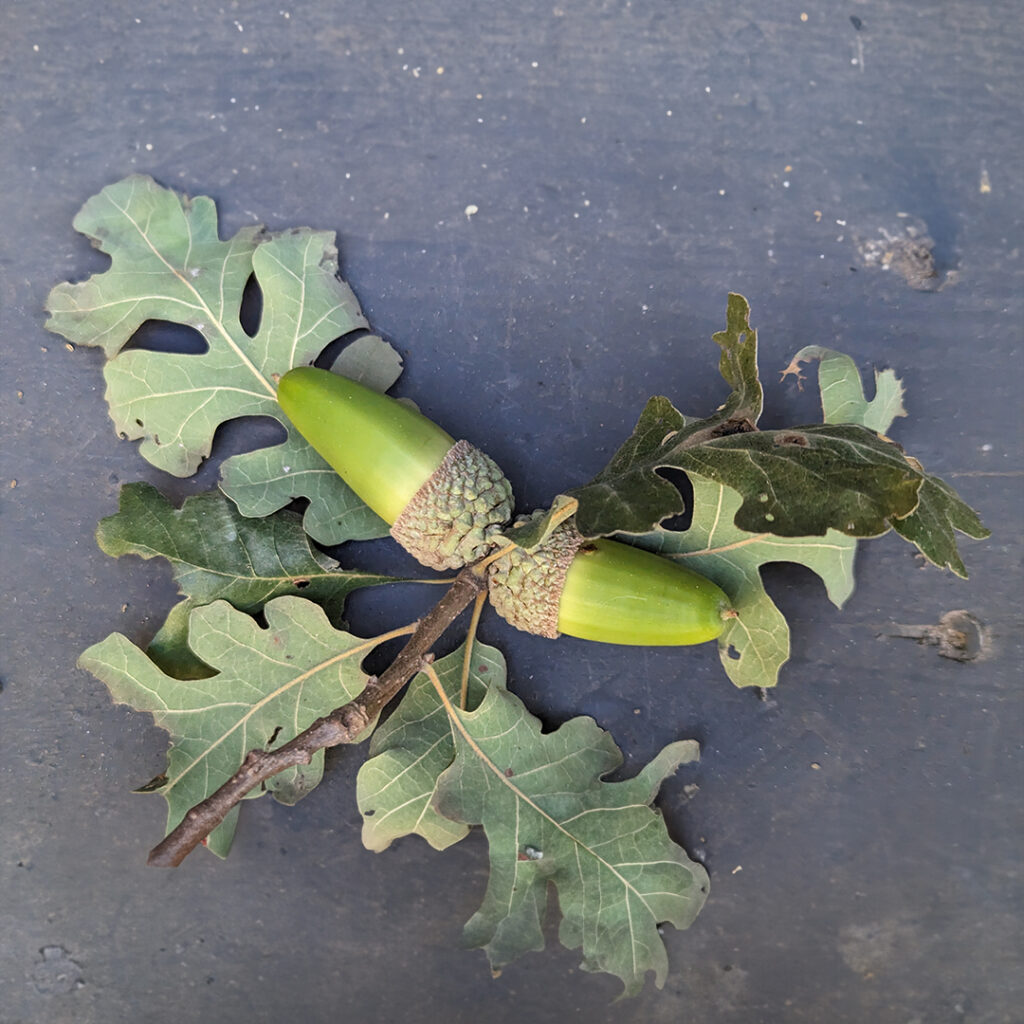
The acorns are 25-35 mm long and 15-20 mm wide, which is larger than most other oaks. They mature in one year, which is faster than most other Californian oaks. These acorns are moderately sweet and edible, but they need to be leached of their tannins before consumption.
Habitat: Quercus lobata grows in interior valleys and foothills from Siskiyou County to San Diego County in California. It prefers deep soils that have access to groundwater and can tolerate cool wet winters and hot dry summers. It is often found in valley bottoms, floodplains, creeks, and stream terraces that have seasonally saturated soils and may be intermittently flooded. It is the dominant species in both valley oak woodland and valley oak riparian forest ecosystems, where it forms dense stands or mixes with other plants.
Quercus kelloggii – the Black Oak:
Quercus kelloggii, also known as California black oak, is a deciduous tree in the red oak group. It is native to California, where it grows on sunny and windy slopes and ridges with well-drained soils.
Leaves: The leaves have seven lobes and a velvety texture. They are red and soft when they emerge, then turn dark green on the upper side and grayish green on the lower side.
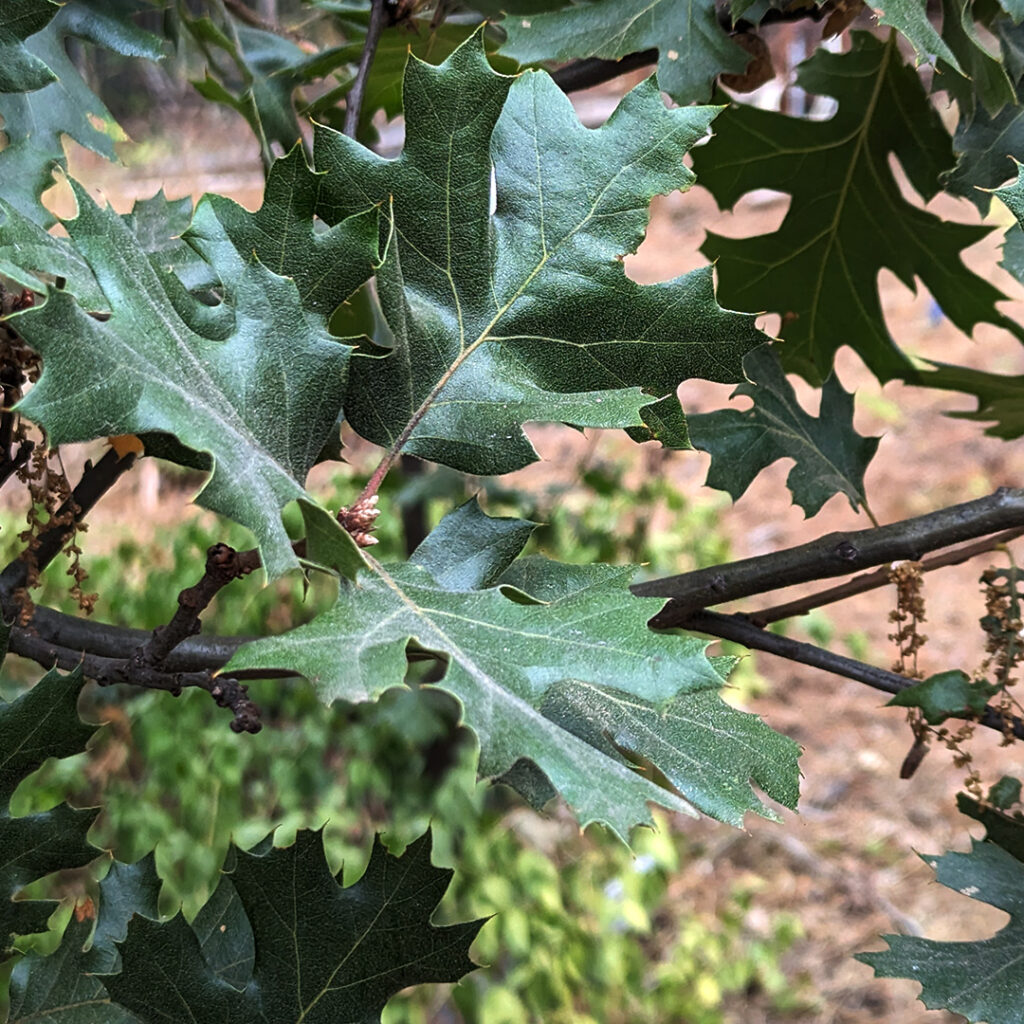
In autumn, they change to yellow-green and orange-brown before falling.
Acorns: The acorns are relatively large compared to other oaks, measuring from 2.5 to 4 centimeters long and 1.5 to 1.8 centimeters wide. They have a slender shape and a reddish brown color. The base of the acorn is enclosed in a cupule, which is a woody structure that holds the acorn.
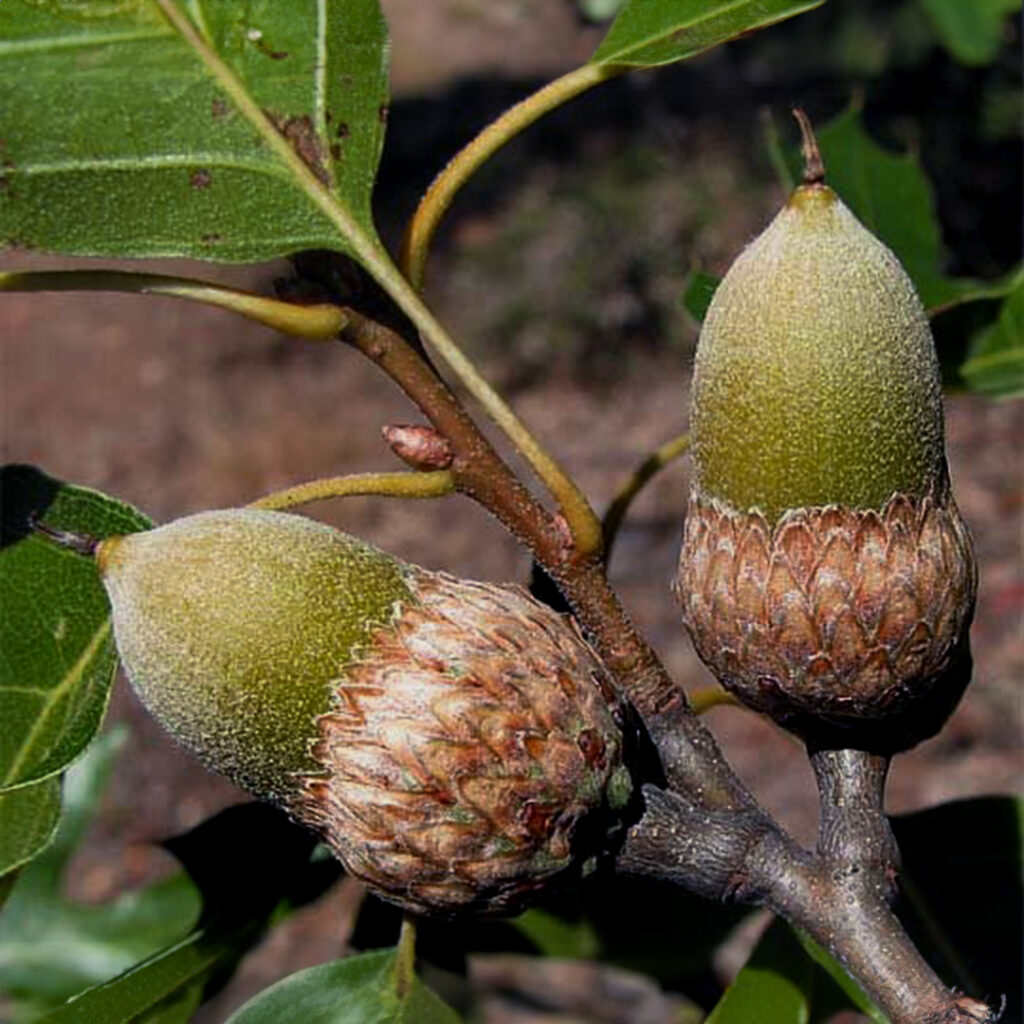
(note: the kelloggii on our property have not yet started any acorns this year… so the photo above is borrowed from pinterest.)
The cupule is covered with thin scales that are appressed to the surface and smooth or slightly hairy at the tip. The scales are light brown in color and contrast with the darker acorn. The acorns mature about 7 to 8 months after pollination, which is unusual for a red oak, as most red oaks take two years to mature their acorns. These acorns are an important food source for many animals, such as squirrels, woodpeckers, deer, and bear. They are also edible for humans, but they too need to be leached of their tannins before consumption.
Bark and habit: The bark is thin and smooth in young trees, but becomes thick, ridged, plate-like, and blackish in older trees. The bark protects the tree from fire and insects. The tree’s growth habit varies depending on the site and the age of the tree. It may grow as a shrub with multiple stems on poor sites, or as a medium-sized tree with a single trunk and a broad and rounded crown on better sites. The trunk is often forked into two or more branches, and may become hollow in old trees.
Quercus agrifolia – the Coastal Live Oak:
Quercus agrifolia – Coastal Live Oak The Quercus agrifolia is an evergreen tree that belongs to the red oak section (Lobatae) of the oak genus (Quercus). It is closely related to the black oak (Quercus kelloggii), but it has distinctive leaves, acorns, and habit that make it easy to identify.
Leaves: The leaves of the coast live oak are oval, convex, and leathery, resembling holly leaves. They are 2 to 7 centimeters long and 1 to 4 centimeters wide, with smooth edges. The leaf margin has spiny teeth, with sharp fibers that extend from the veins. The leaves are dark green on both sides and stay green throughout the year. The leaves are adapted to the dry and windy conditions of the coastal regions, where they help reduce water loss and protect the tree from salt spray.
Acorns: The acorns of the coast live oak are small and round, 2 to 3.5 centimeters long and 1 to 1.5 centimeters wide. They are reddish brown and have a cupule that covers about a quarter of the nut. The scales of the cupule are smooth to lightly covered with tiny hairs..
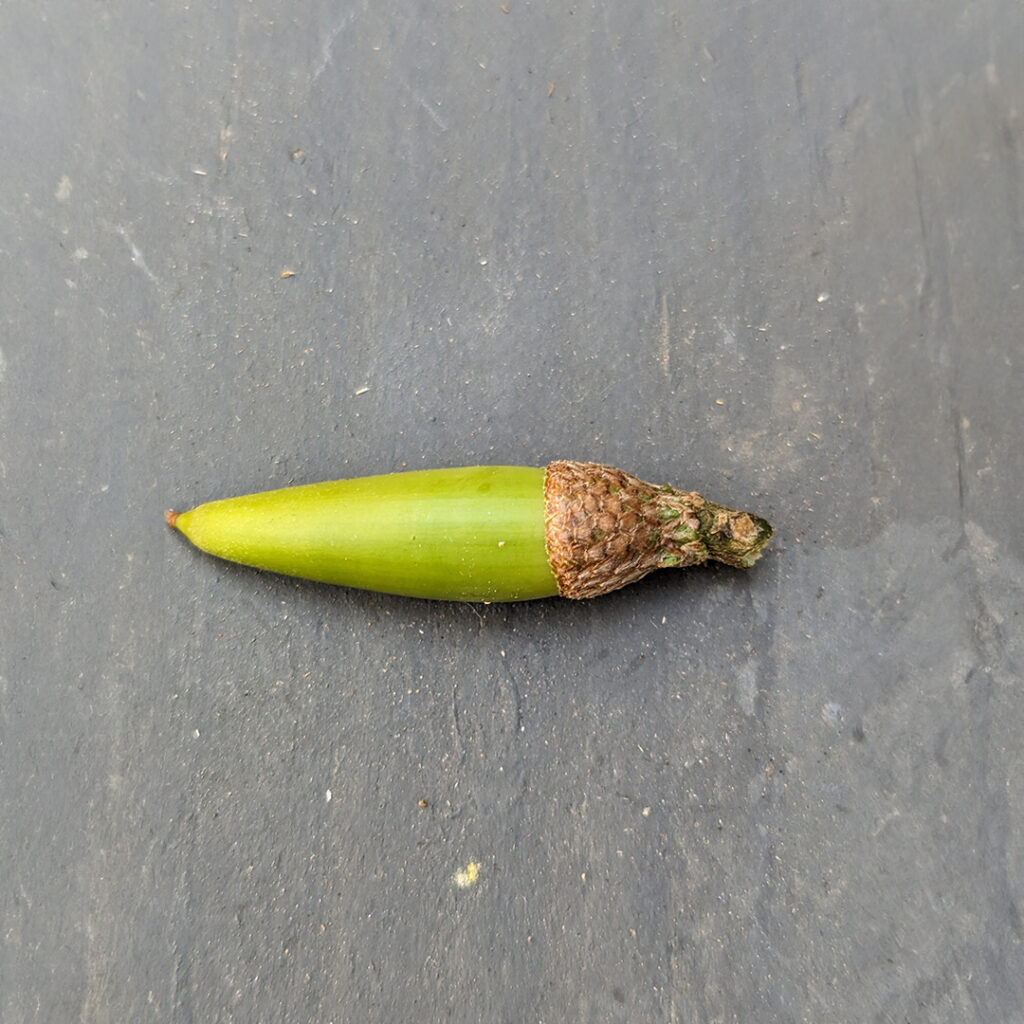
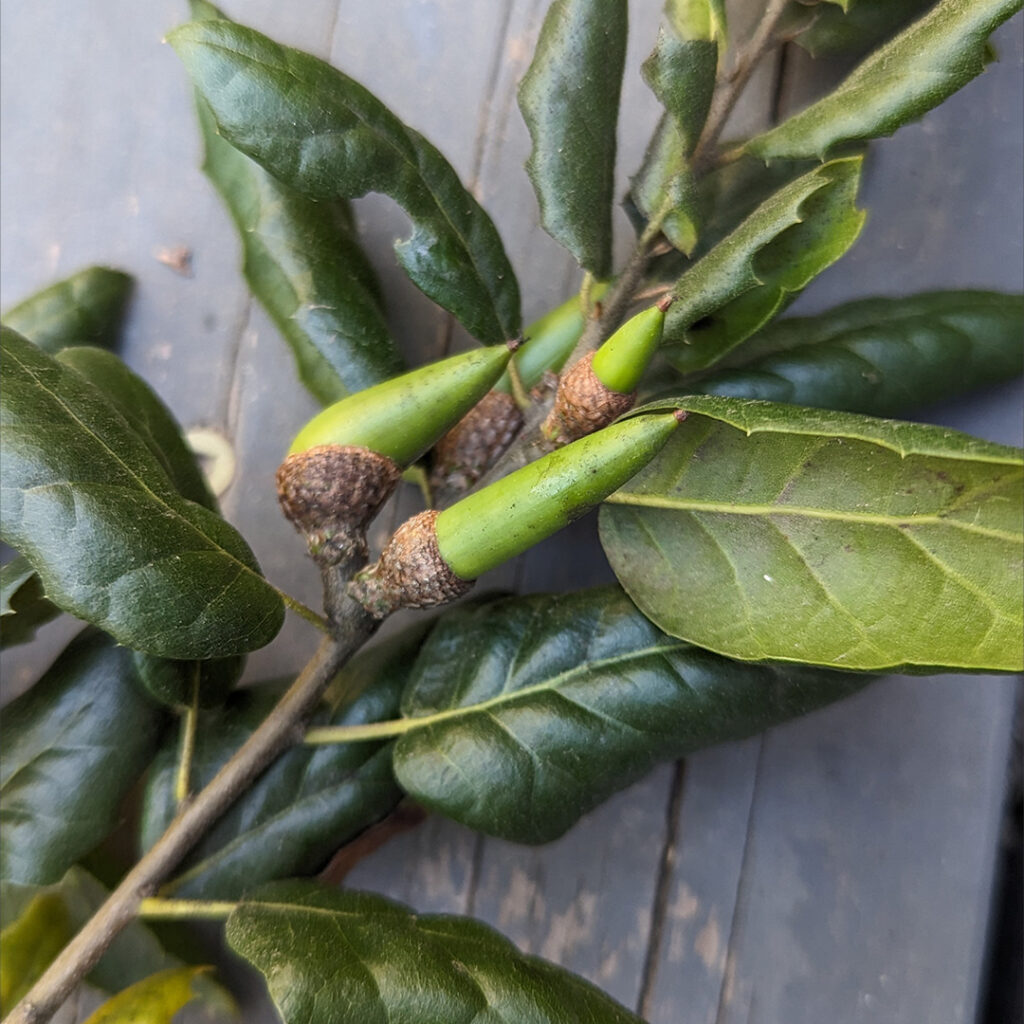
This tree on our property has long, oddly curved acorns
The acorns mature in about 7 to 8 months after pollination, which is unusual for a red oak. Most red oaks take 18 months to mature their acorns. The acorns are an important food source for many animals, such as squirrels, woodpeckers, jays, deer, and bears.
Habit: The coast live oak has a branched trunk and can grow up to 25 meters tall. Some trees may live for more than 1,000 years. The trunk is often twisted, thick and gnarled, especially in older trees. The crown is round and dense in young and middle-aged trees, but becomes more open and defined in old trees. The coast live oak grows in a variety of habitats, from coastal hills and valleys to inland mountains and canyons. It is tolerant of drought, fire, and salt spray, but sensitive to sudden oak death, a fungal disease that has killed many oaks in California.
Quercus wislizeni – the Inland Live Oak
Quercus wislizeni, also known as interior live oak, is another species of oak tree native to California. It too is evergreen, meaning it does not shed its leaves in winter. It grows mainly in the interior valleys and foothills of the state, where it can tolerate dry and rocky soils.
The leaves of Quercus wislizeni are oblong and leathery, with smooth edges and pointed tips. Quercus wislizeni is closely related to Quercus agrifolia, the coast live oak but can be distinguished by their smaller and more oblong leaves. They are glossy green on the upper surface and dull gray-green on the lower surface. The leaves are usually 1 to 3 inches long and 0.5 to 1 inch wide.
The acorns of Quercus wislizeni are small and round, with a diameter of about 0.5 inch. They have a shallow cup that covers less than a quarter of the nut. Compared with the Q. agrifolia they are smaller and more oblong.
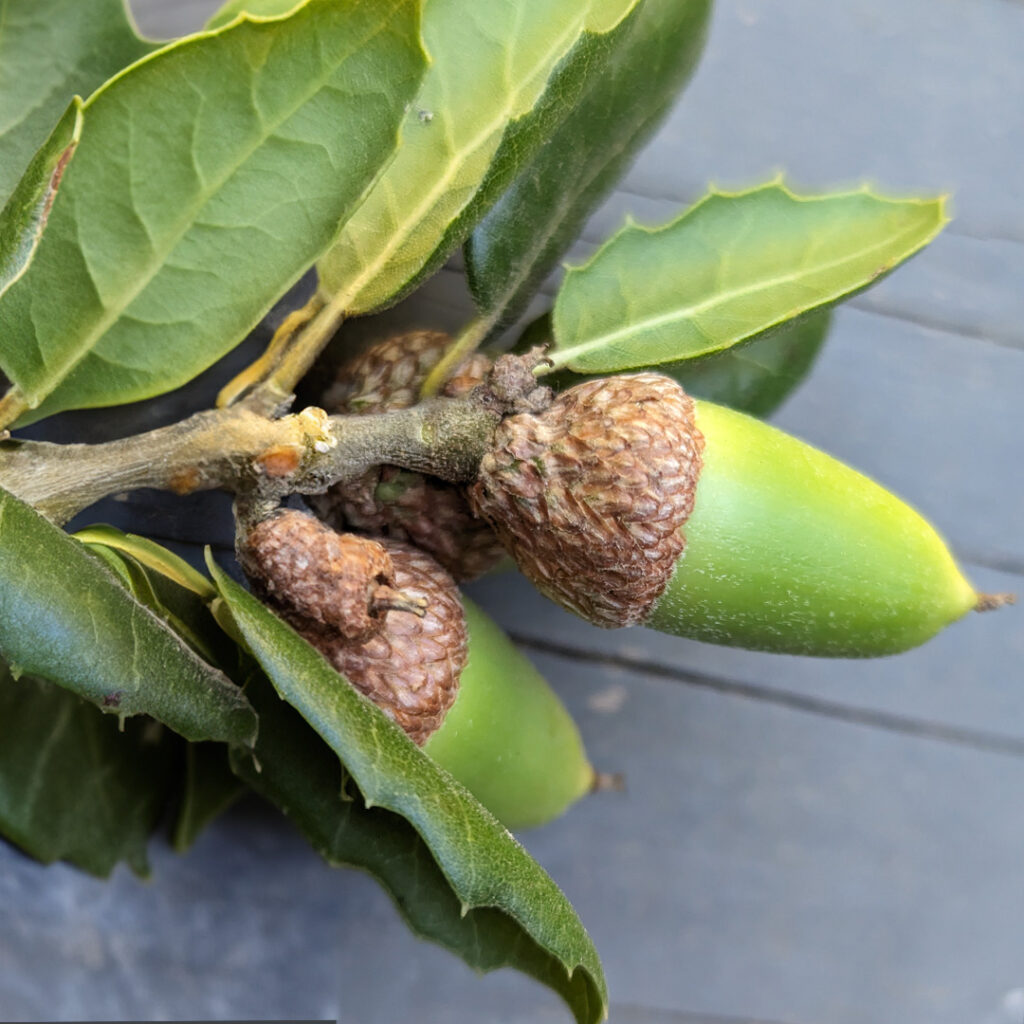
The acorns mature in one year and are dispersed by animals such as squirrels and jays.
The bark of Quercus wislizeni is dark brown or black, with deep furrows and ridges. The trunk can reach up to 3 feet in diameter, and the tree can grow up to 60 feet in height. The branches are often twisted and spreading, forming a dense canopy.
